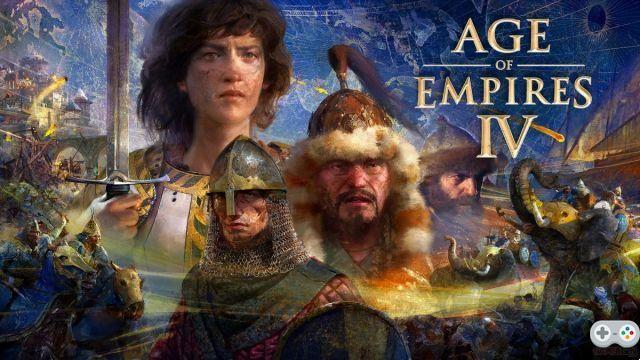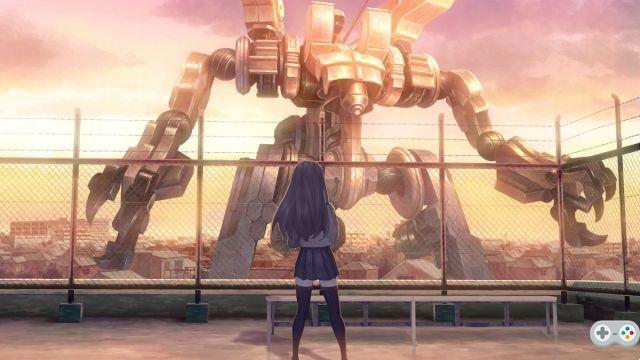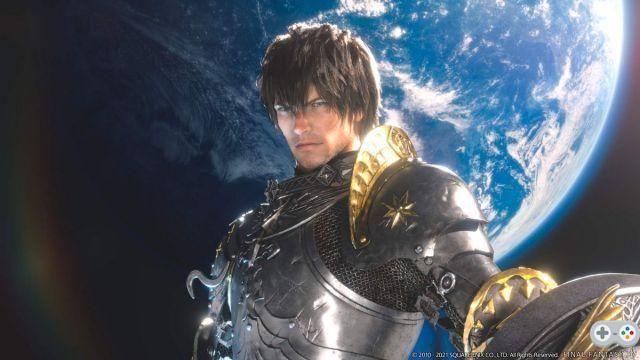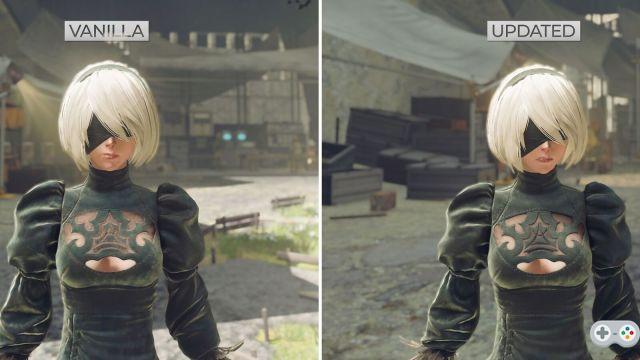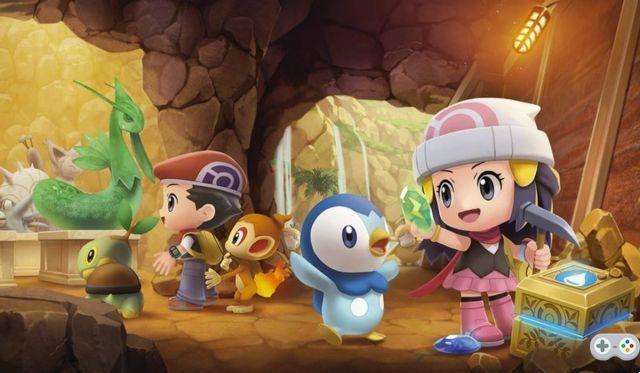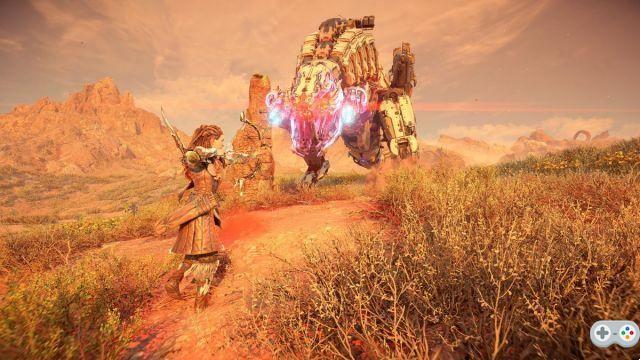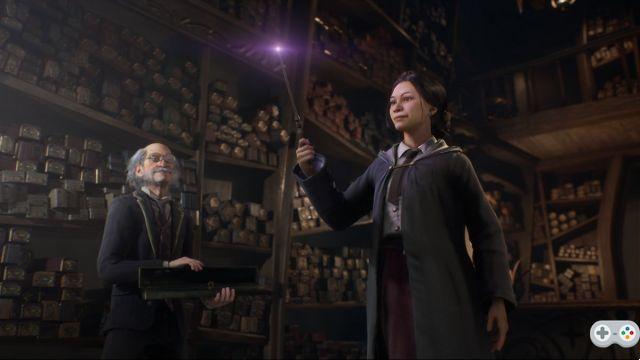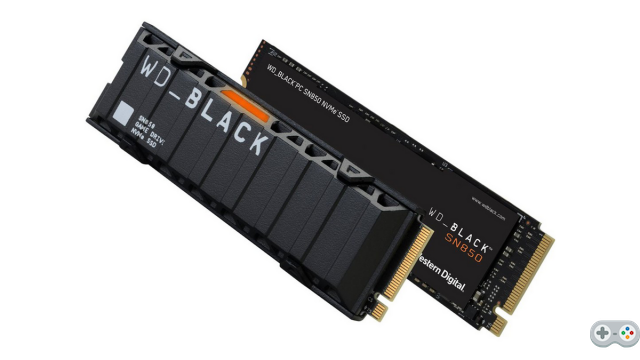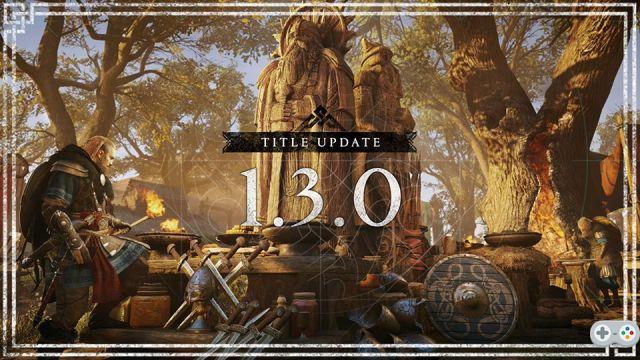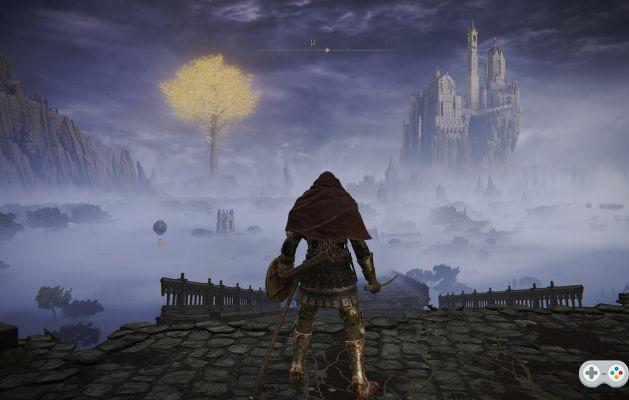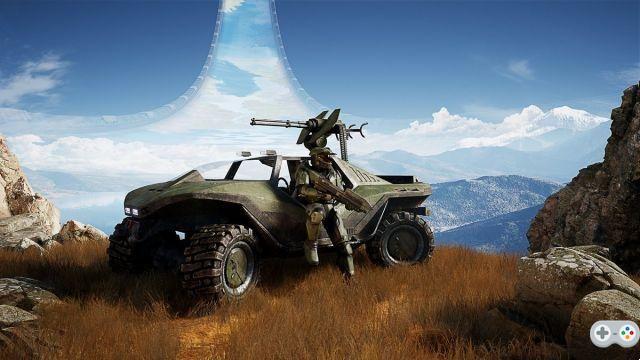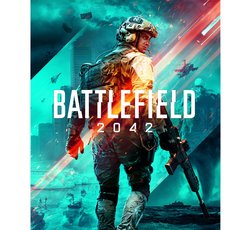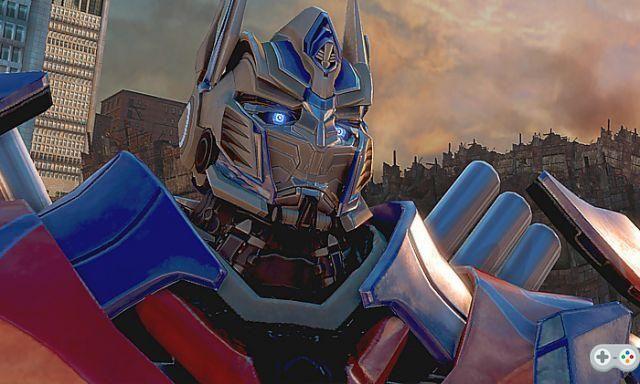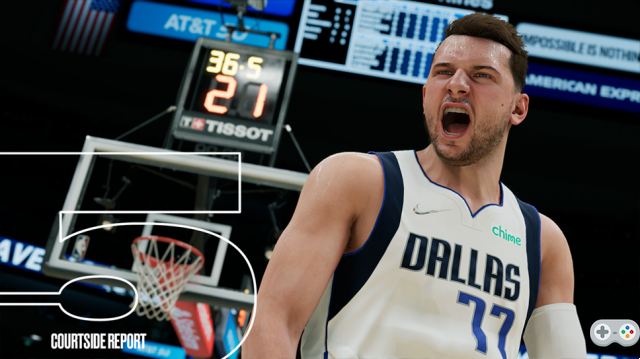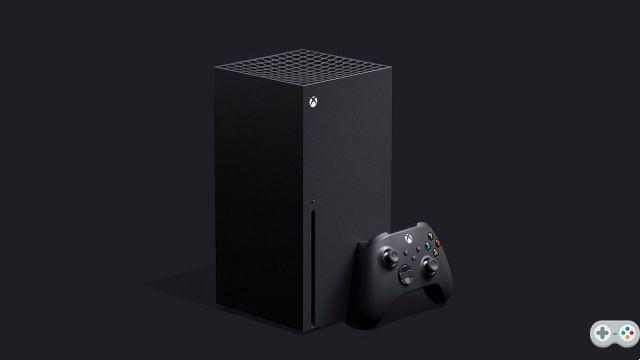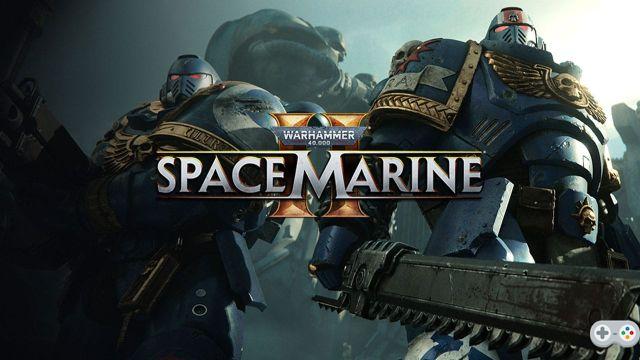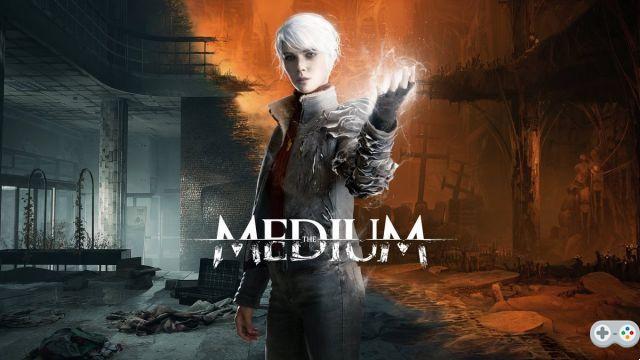
In just four years - and four games - Bloober Team has made its mark on the psychological thriller genre, reinvigorated for more than a decade by illustrious independent studios such as Frictional Games (Amnesia, SOMA), The Chinese Room (Everybody's Gone to the Rapture) or The Astronauts (The Vanishing of Ethan Carter). After two effective Layers of Fear, a correct command game and a powerful cyberpunk investigation (Blair Witch and >observer_), the Polish studio undoubtedly delivers with The Medium its most personal title, exclusively at Microsoft on PC and Xbox.
7
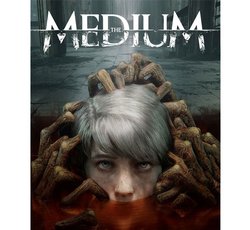 Read the conclusionThe Medium
Read the conclusionThe Medium
- Niwa, an exceptional setting
- Successful atmosphere
- High quality soundtrack
- Impeccable dubs
- Very dirigiste and simplistic puzzles
- Handling issues
- Dated animations
- Dubious optimization
Krakow, 1999. Just after losing her adoptive father, Marianne receives a mysterious phone call. This call for help will bring out his past, years after a trauma that saw his parents - and his memory - tragically disappear. Endowed since then with parapsychic powers, this tortured heroine will, for seven hours, survey the working-class summer resort of Niwa, a communist remnant symbol of the wounds of a people tossed about by history. Symphony of concrete, this impressive abandoned building alternates between suffocating tight corridors and large striking volumes, allowing Bloober Team to play cheerfully with perspective.
Because The Medium is a 3D adventure game that chooses to impose its camera angles, offering at each crossing amazing staging finds of which only the maneuverability, disturbed by these regular angle changes, will relativize somewhat the effects. Supported by a meticulous composition of the sets, which tell as much by their decrepitude as by the buried memories they shelter, this choice, as old-fashioned as it is audacious, takes on a new dimension when the world is torn apart, regularly during the adventure.
on the other side of the mirror
Marianne and her ethereal alter-ego can then survey two universes in parallel, which intersect and cohabit to animate the progression. The screen splits in two, and the player's attention with it. It is rarely the pretext for a jump scare, which the studio is usually fond of, and more often the opportunity to solve an enigma or to discover the traces left by the souls of the fellows who once roamed the premises. Beyond the marketing gimmick that Bloober Team has widely echoed in recent months - imagined in 2012, The Medium had to wait for this generation to find a technical setting to match the ambitions of its studio - this duality resonates perfectly with the theme of the game and is the central element that binds its story, setting, gameplay and mood.
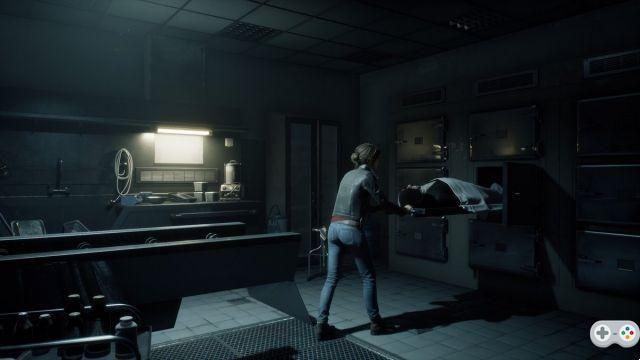
As we will see, these different aspects do not all benefit from the same care, but the general rendering of the effect, like the mental contortion it involves - the player must scan two substantially different universes at the same time - shows a certain efficiency, in addition to allowing Bloober Team to double its staging effects. The other world is not an aesthetic subterfuge to multiply monstrous appearances, to scare or impose danger. Its organic and ashy appearance creates a real break in mood and tone, with a verdigris visual that contrasts with the bluish tint of the real world. The real world disturbs by the cold truth of its concreteness, that of the spirits by the hidden meaning and the lies it shelters.
History with a big ax
Full of twists and densified by its original geographical and temporal framework, the scenario of The Medium is impressive in ambition and mastery. He perfectly manages to combine the small story with the big one, by articulating the discoveries of Marianne with the segmented destiny of his nation, wedged between Nazi Germany and the socialist yoke of the USSR after the war. Collaboration, moral deviations, family dilemmas: The Medium carries, anchored to the body, a number of heavy and concrete themes until a conclusion certainly relatively agreed from a dramatic point of view, but all the same very effective, in its scenography and its symbolic.
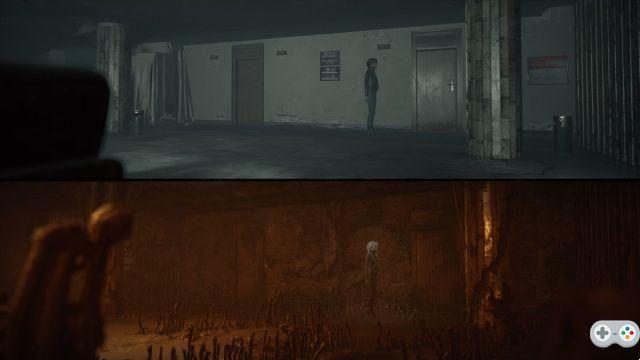
But it's really through its atmosphere that The Medium seizes us, without ever releasing the grip of tension that it installs from the first minutes of the adventure. The sets and the staging, as we have said, contribute greatly to this, but it is undoubtedly the music that brings the most echo to it. The compositions of Arkadiusz Reikowski and Akira Yamaoka know how to be discreet during calm moments of exploration, to explode when the time comes and radiate the eventful sequences with all their strange resonance. The impeccable English dubbing does not spoil anything, and if we had liked being able to get lost in Niwa in Polish for more authenticity, it is difficult to condemn Bloober Team for having opted for a professional English-speaking cast, of which the inevitable Troy Baker constitutes the flawless figurehead.
However, The Medium is not just an empty shell. Each interactive element (there are certainly few of them), each interaction with the scenery is an opportunity for the player to learn more about Poland, Niwa or the gallery of mysterious characters that punctuate the adventure. The narration is omnipresent, and largely lends credibility to the universe that we survey with texts, letters, drawings, memories and even period posters to be discovered in the four corners of the building. Each decorative element is in its place, each broken window carries the rage of a place that has a lot to say despite its appearance. It's not the first time that an empty and decrepit place has come to life in a video game, but The Medium is undoubtedly at the top of the basket of fascinating universes that we easily imagine extending beyond a simple title.
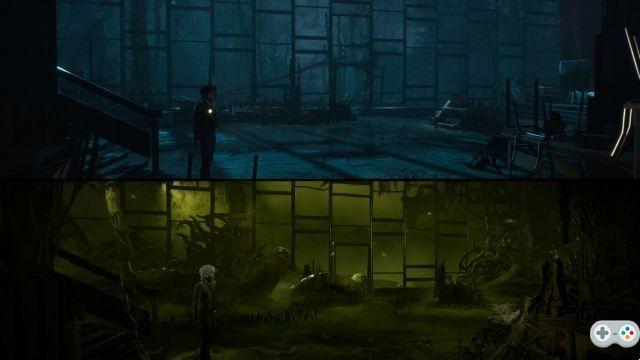
Nothing is lost, but nothing is created
Master of the atmosphere and the narration, Bloober Team has nevertheless never really shone with its ideas of gameplay, and The Medium is no exception to the rule. The summary infiltration scenes, taken from Amnesia: Machine For Pigs or Outlast and which we have already had to endure in >observer_, will not be remembered, just like the interest and overall simplicity of the puzzles. Objects are rarely more than a few meters from the objective, and their connection to the general plot is sometimes a little loose. Worse, we even fall into repetition when it comes to finding a crank or restarting the electricity. We feel that the Polish studio wants to tell its story without slowing down the player more than necessary, but what we gain in rhythm is at the cost of playfulness, and the imbalance is sometimes too obvious.
Despite the interesting gimmick of the two worlds that we often survey in parallel, we rarely have the feeling of playing something more ample and ambitious than a point'n click adventure game (like Syberia, to mention than the one to which he is closest philosophically) classical and dirigiste. The game sometimes falls squarely into the total walking sim, with narrative tunnels in which the player is relegated to the rank of vaguely active spectator. If this is not a problem in itself given the mastery of the artistic direction and the absurd ideas of decorum, the permanent in-between in which Bloober Team plunges us seems to drown the coherence of the proposal. It would probably have been better to fully embrace a genre rather than stick to this hybrid scheme that struggles to fully satisfy.
JVFR
This is all the more problematic as the Bloober Team borrows, and a lot. Like the studio's previous productions, The Medium draws heavily on horror references, this time adding well-known elements of traditional point and click. If we speak politely of a very strong homage to Silent Hill for the pitch, the organic parallel world and the determined heroine in search of an answer on her origins, it will be more difficult to forgive the clear lack of inspiration in the playful unfolding adventure, confusing classicism from start to finish. The exploration is mechanical, the puzzles agreed and anything that doesn't serve the purpose seems an excuse to add a few minutes of play to the counter. The added value is rather minimal.
Realization: The Medium reads in the past
Shy in its gameplay, which misses the mark a bit by rarely using the two parallel universes rendered in real time in an original way, The Medium nevertheless pays a fairly heavy technical price. On our PC (6800K, GTX 1070, 32 GB of RAM), the game runs correctly at 1080p, but struggles to exceed 30 fps when the screen is split and the two worlds are displayed together. Proof that optimization efforts could have been made, it is relatively the same thing in 2K, whether the parameters are pushed to the bottom or limited to the minimum. You will really need to have a recent machine (see the Nerces framework below) to enjoy an almost fluid game in all circumstances, even if framerate drops seem inevitable, whatever the configuration or the support.
JVFR
The Medium is however far from being a graphic slap. Magnificent in their composition thanks to the framing which constantly parallels Marianne's loneliness and the dilapidation of the place, the sets are certainly the prettiest in the game, sublimated by well-regarded plays of light. The animations of the characters are sketchy, as evidenced by their way of sliding on the ground and against the limits of the decor in the manner of the leaders of the survival horror of the PlayStation 2. It is unfair to compare the two titles as their ambitions and means differ, but The Last of Us 2 set a precedent in this register, and it is difficult to ignore this glaring backward step. The Medium doesn't even live up to the first TLoU, released in 2013.
JVFR
RTX ON ?
If the technique is not the strong point of The Medium, we wanted to focus on a specific point of the realization of the game. Indeed, the Bloober Team benefited from the support of NVIDIA. This translates into support for ray tracing - with the presence of the game on GeForce NOW for founding members - and the famous DLSS. The latter is all the more useful as The Medium sometimes suffers from “doubtful” fluidity. As often, DLSS has several levels of quality. We have always favored “high” quality.
There, the result is not only more flattering for the retina than the FXAA / TXAA, but it is also much lighter for our graphics card. In 3 x 440 and in the worst case, the gains are 1 frames per second. More generally, you can take advantage of +440 or even +15 ips which changes everything and allows you to almost systematically exceed 25 ips on an RTX 35. still has a few rare “hollows”.
JVFR
JVFR
Hollows which are generally linked to an imperfect use of ray tracing: indeed, these hollows disappear as soon as the RT is deactivated in the options. An option supported by NVIDIA which however struggles to fully justify itself. Our juxtapositions illustrate the scenes on which the impact of ray tracing is most noticeable: the differences are subtle. That said, let's recognize that it is part of the atmosphere and when you are used to it, you lose a little something by deactivating it.
Let's hope The Medium takes advantage of updates soon to make this all smoother, because if with an RTX 3080 and even an RTX 3060 Ti, it almost always runs above 60 fps, the "dual reality" sequences lead to a noticeable drop : even with DLSS, an RTX 3060 Ti no longer guaranteed 50 fps in all circumstances.
JVFR
JVFR
The Medium: l'avis de Clubic
Carried by its sumptuous sets, its tortured staging and its captivating scenario, The Medium manages to make people forget its many technical and playful archaisms. Between walking sim and old-fashioned adventure game, Bloober Team's balancing act is captivating from start to finish, and that's the main thing, even if we would have liked a better harmony between exploration and the story, a better intricacy of the game and its stakes. If it is not the exclusive heavyweight that Microsoft sells in its communication, nor the next horror game to be bawled on Twitch, The Medium is a good adventure game which definitely imposes its developer as one masters of the modern psychological thriller. The Bloober Team has things to say, and we can't wait to discover the rest of its story.
Test carried out from a version provided by NVIDIA
The Medium7
Like Bloober Team's previous games, The Medium relies on its exceptional atmosphere and the maturity of its subject matter, but lacks a glaring lack of playful inventiveness and a largely perfectible technical realization. The sets and the music will nevertheless remain in the memories, and almost in themselves justify the discovery of the game.Most
- Niwa, an exceptional setting
- Successful atmosphere
- High quality soundtrack
- Impeccable dubs
- Deep and breathtaking storyline
- The little story is part of the big
- Available in Game Pass
The lessers
- Very dirigiste and simplistic puzzles
- Handling issues
- Dated animations
- Dubious optimization




